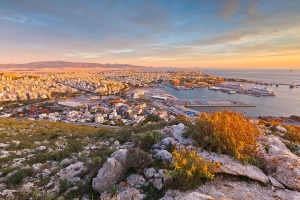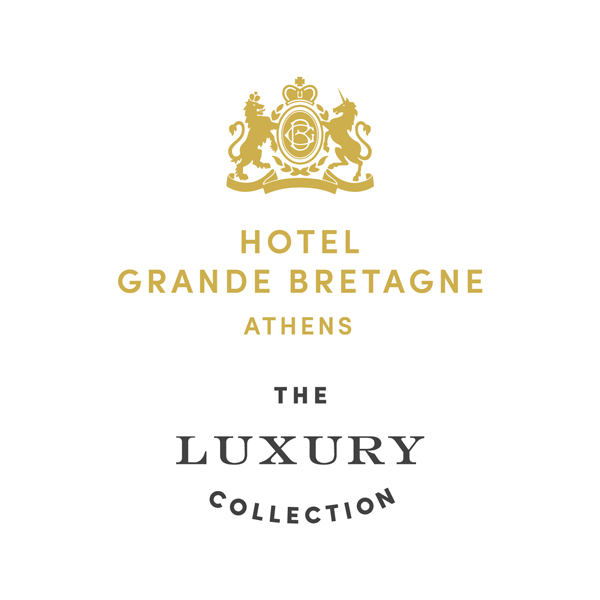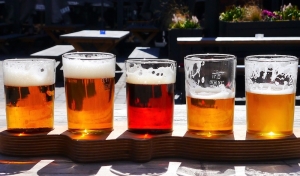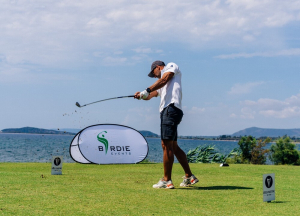- Preheat the oven to 350 F. Grease the bottom and sides of a 9 x 13-inch pan and set aside.
- Mix the flour, semolina, and baking powder in a medium bowl.
- Cream the butter with the sugar until light and fluffy using an electric mixer. With the mixer running, add the egg yolks one by one. Continue mixing until the batter turns light yellow. Add the vanilla extract and lemon zest.
- With the mixer on low speed, add the flour mixture in 3 batches alternating with the milk.
- Clean the beaters well and beat the egg whites in a separate bowl with a pinch of salt until soft peaks form.
- Using a spatula, gently fold the egg whites into the batter until just combined. Don't mix too much, or you will "flatten" your egg whites.
- Pour the batter into the pan, level with a spatula, and bake for 45 minutes or until the cake is a nice golden color.
XpatAthens
Surprising Ways To Cook With Greek Yogurt
This wonder ingredient goes way beyond breakfast, to cooling off spicy dishes, keeping burgers juicy and even helping you make a last-minute cake.
A Light -- But Still Creamy -- Mac 'n' Cheese
Sure, you can make swaps to turn this classic comfort-food dish into a healthy dinner, but if you go too far -- e.g., using fat-free cheese, or a butter alternative -- you may sacrifice the richness. Greek yogurt, though, ensures a finished casserole that's just as thick and filling as traditional versions. Recipe
Cupcakes (or Cake) Without Any Fancy Ingredients
The two-ingredient yogurt cake recipe we've been seeing all over Pinterest (just add cake mix!) certainly sounds intriguing. Even if you're skeptical, though, it does drive home the point that if you've got yogurt, you can probably make a cake. (The same holds true for sour cream, but these days, fridges are more likely to contain a tub of plain Greek yogurt than a tub of sour cream.) Adding a cup of yogurt yields a cake that's moist and keeps well for days. Recipe
A Cool Counterpoint To Spicy Soup
We're totally stealing this recipe's trick for taming the heat on a hot soup: You thin plain Greek yogurt with water (use three parts yogurt and one part water), and then drizzle it over whatever you're eating. In this case, it's a curried (and cayenne-d) Indian lentil and chickpea stew, but the technique would work great with chili, too. Recipe
Healthy Burgers That Stay Juicy
Turkey burgers are such a wonderful alternative to burgers made with fattier meats, but all too often they're dry and crumbly. The fix: a quarter-cup of Greek yogurt (for a pound and a half of meat). It's better for you than eggs, and couldn't be easier: just gently mix it into the meat before forming the patties. Recipe
A Dipping Sauce That Goes With Practically Anything
O mag food columnist Sunny Anderson likes to dip fried green tomatillos into this sweet and spicy mix of Greek yogurt, sour cream, honey and hot sauce -- but the creamy accompaniment has tons more uses. Try it on a BLT instead of mayo, with quesadillas or alongside appetizers from potato skins to chicken fingers. Recipe
By Lynn Andriani
Minimum Salary To Rise To €654 In October
The first part of a government plan to increase the minimum salary is expected to be implemented in October, taking the level up to 654 euros per month for all private sector workers. The government’s election pledge to raise the minimum monthly salary to 751 euros will not be fulfilled before the second half of 2016.
The Labor Ministry is currently planning for two regulations, which will bring the salaries paid to young workers up to the same level as those received by older workers, as well as the minimum salary of menial workers to that of office employees. That way, if Parliament clears both measures, no worker should get less than 654 euros per month.
To read more please visit: ekathimerini.com
By Roula Salourou
Traditional Homemade Kourabiedes
Serves: 45-50 Cookies
- 500 g butter, at room temperature
- 220 g icing sugar
- 1 g vanilla powder
- 1 teaspoon(s) rosewater
- 30 g bitter almond liqueur, or brandy or rum
- 200-280 g almond slivers or coarsely chopped, unsalted and toasted
- 900 g all-purpose flour
- 1 pinch salt
- 1 tablespoon(s) rosewater
- 300 g icing sugar
1. Preheat the oven to 180ο C (350ο F) set to fan.
2. In a mixer’s bowl add the butter, the icing sugar, and beat with the paddle attachment at high speed, for 10-15 minutes, until the mixture is fluffy and white.
3. Add the vanilla powder, the rosewater, the bitter almond liqueur, and keep beating. Remove the bowl from the mixer.
4. Break down the almond slivers with your hands, in order to crumble them, and add them to a bowl. Add the flour, the salt, and put them in the mixer’s bowl.
5. Mix the mixture with a serving spoon, very softly so that it does not lose its volume. As soon as the ingredients are homogenized, mix with your hands.
6. Shape balls, 30 g each, and transfer to a baking pan lined with parchment paper. Lightly press the center with your finger and bake for 20-25 minutes.
September 6 - A Fresh Start To Fall
Please click HERE to view this issue of our newsletter!
Happy 10th Birthday XpatAthens
1) A Cape Sounion Day-Trip Transfer Service from YK Executive Transfers
3) Dinner for 2 at Chefi Restaurant
4) Dinner for 2 at Dinner In The Sky
5) 2 nights accommodation at the King George Hotel Athens
Greek Microbrewries Gaining Popularity Locally And Internationally
'The Favourite' Takes Home Seven BAFTA Awards
Chocolate Truffles Recipe
Ingredients
160g dark chocolate
180g Petit Beurre biscuits
1/2 cup full cream milk
1/3 cup fresh cream
1 tablespoon liqueur
1 & 1/4 cup chopped walnuts
Method
- Chop chocolate into small pieces and completely melt over low heat in a double boiler.
- Place biscuits in a large bowl and crush them into very small pieces. Add a quarter of a cup of chopped walnuts.
- Pour melted chocolate over biscuits and walnuts and mix together with a wooden spoon.
- Add milk, fresh cream, and liqueur and mix thoroughly with a wooden spoon until all ingredients are well combined.
- Cover bowl with cling wrap and place in refrigerator (not freezer) for 1.5 hours.
- Remove from refrigerator and take a teaspoon of the mixture and begin forming them into ball-like shapes by rolling the mixture in your palms. It makes it easier by wearing food handling gloves, otherwise wet your hands with water in between each truffle.
- Roll each truffle into the chopped walnuts and place them back in the refrigerator covered tightly until ready to serve.
Originally published on: greekcitytimes.com
Greek Semolina Cake - Revani
Here's an easy-to-follow recipe for the perfect revani, a delightful addition to any sweet table!
For the cake:
- 1 cup all-purpose flour
- 1 cup fine semolina
- 1 tablespoon baking powder
- 1/2 cup unsalted butter
- 1 cup granulated sugar
- 3 large eggs, separated
- 1 teaspoon vanilla extract
- 1 lemon, zested
- 1 cup milk
- 1 pinch salt
- 1 1/2 cups water
- 1 1/2 cups granulated sugar
- 2 strips orange zest
- 1 teaspoon fresh lemon juice
- Add the water, sugar, and orange zest to a saucepan and bring to a boil. Simmer for 5 minutes. Add the lemon juice and cool.
- While the cake is still warm, cover it with syrup. When the cake cools, you can sprinkle it with some powdered sugar, cinnamon, and almonds, if using.
Greek Maritime Golf Event supports Parents Association of Children with Cancer “Floga”
Photo Credit: Greek Maritime Golf Event


















